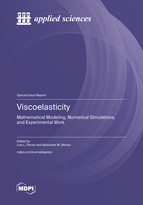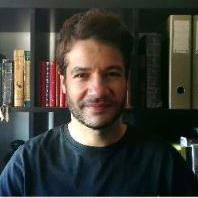Viscoelasticity: Mathematical Modeling, Numerical Simulations, and Experimental Work
A special issue of Applied Sciences (ISSN 2076-3417). This special issue belongs to the section "Fluid Science and Technology".
Deadline for manuscript submissions: closed (31 March 2022) | Viewed by 25360
Special Issue Editors
Interests: numerical analysis; integro-differential equations; mathematical modelling; viscoelastic flows; anomalous diffusion; machine learning
Special Issues, Collections and Topics in MDPI journals
Interests: theoretical and computational rheology; complex flows of complex fluids; electrokinetics; multiphase flow; micro-combustion
Special Issues, Collections and Topics in MDPI journals
Special Issue Information
Dear Colleagues,
This Special Issue aims to gather new developments on the different areas of viscous and viscoelastic fluid flows, ranging from mathematical modeling to experimental work.
All researchers working in these areas are encouraged to submit their works. All submissions will be subject to rapid and thorough review.
Prof. Dr. Luís L. Ferrás
Prof. Dr. Alexandre M. Afonso
Guest Editors
Manuscript Submission Information
Manuscripts should be submitted online at www.mdpi.com by registering and logging in to this website. Once you are registered, click here to go to the submission form. Manuscripts can be submitted until the deadline. All submissions that pass pre-check are peer-reviewed. Accepted papers will be published continuously in the journal (as soon as accepted) and will be listed together on the special issue website. Research articles, review articles as well as short communications are invited. For planned papers, a title and short abstract (about 100 words) can be sent to the Editorial Office for announcement on this website.
Submitted manuscripts should not have been published previously, nor be under consideration for publication elsewhere (except conference proceedings papers). All manuscripts are thoroughly refereed through a single-blind peer-review process. A guide for authors and other relevant information for submission of manuscripts is available on the Instructions for Authors page. Applied Sciences is an international peer-reviewed open access semimonthly journal published by MDPI.
Please visit the Instructions for Authors page before submitting a manuscript. The Article Processing Charge (APC) for publication in this open access journal is 2400 CHF (Swiss Francs). Submitted papers should be well formatted and use good English. Authors may use MDPI's English editing service prior to publication or during author revisions.
Keywords
- viscoelasticity
- mathematical models for viscous-viscoelastic fluids
- computational fluid dynamics
- computational rheology
- numerical methods for complex viscous-viscoelastic flows
- analytical solutions
- boundary conditions
- experimental work







